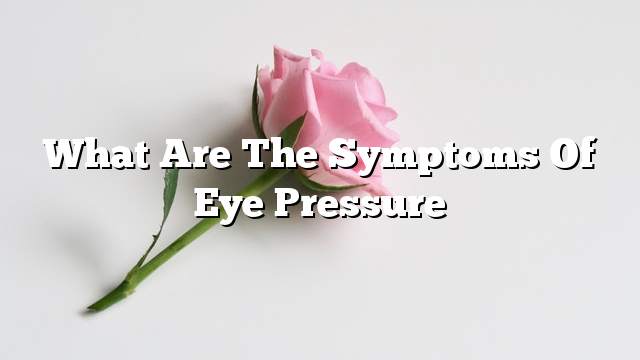High eye pressure and glaucoma
Eye pressure refers to any condition in which the internal pressure of the eye increases. Normal eye pressure ranges between 10 and 21 mm Hg, so when a reading is recorded for eye pressure, the patient has high eye pressure. The patient must be examined by a specialist because it may cause glaucoma or glaucoma, a disease that results in the destruction of the optic nerve connecting the eye and brain, And arises from the accumulation of fluid in the eye and non-discharge as required, which leads to high pressure inside the eye pressing the optic nerve as well.
High eye pressure is a common disease, but the patient usually does not feel it because there are no early symptoms in many cases. The disease can affect anyone regardless of age, but it is more common among older people in the seventh or eighth decade of age. The eye has a wide open angle, the most common type, representing about 90% of the cases, and arises from the slow gradual accumulation of fluids over time, and therefore occurs in older adults. There is also a closed primary angle glaucoma; a rare type that may arise quickly or slowly. Secondary glaucoma occurs due to another eye condition, such as iritis. There is also a very rare type of glaucoma occurring to children in the early age due to congenital deformation in the eye.
Glaucoma Symptoms
Most patients with glaucoma do not experience any symptoms, except side loss, which may be overlooked by patients until late stages of the disease. This is why the infiltrator is called an intruder. The above occurs in the common type of glaucoma. Closed-angle glaucoma, which has a severe blockage in the corner, is accompanied by several symptoms such as:
- Sharp pain in the eye.
- Vomiting and nausea.
- Red eye.
- Sudden vision impairment.
- See colorful rings around the light when you look at it.
- Suffering from narrow vision.
- The shape of the eye may be blurry or cloudy when viewed, and this is observed in young children.
- Acute glaucoma may also be accompanied by severe headache pain.
Factors that may increase the risk of glaucoma
Because glaucoma may cause vision loss before it is diagnosed, doctors usually recommend a regular eye examination if the patient is at risk of developing glaucoma to prevent complications. People who are most susceptible to glaucoma are as follows:
- People who already suffer from high eye pressure.
- If the patient is over 60 years of age.
- If there is a family history of glaucoma.
- If one belongs to black or Latin race.
- If he suffers from eye conditions such as short sightedness.
- If he is suffering from certain diseases such as diabetes, heart disease, hypertension, or sickle cell anemia.
- When exposed to a wound or a blow to the eye, or after an eye surgery.
- When using corticosteroid drugs, especially if they are in the form of drops, for a long time.
- If there is an early lack of estrogen level in the blood, as well as the result of the procedure to remove the ovaries before the age of 43.
Glaucoma treatment
Glaucoma leads to irreversible damage to the eye. To avoid this, care must be taken to conduct periodic visits and to take appropriate treatment to prevent loss of sight. The aim of giving drugs used to treat glaucoma is to reduce eye pressure. There are several treatment methods as follows:
- Eye drops : It is the first treatment of glaucoma, and aims to increase the fluid generation of the eye and reduce its production as well. There are many types of droplets that contain various types of compounds such as prostaglandin, beta inhibitors, alpha adrenergic stimuli, or cholinergic agents.
- Oral medications : Used in case of not getting the desired benefit of eye drops. Usually, with the use of eye drops, those containing anhydride carbonic blocker are usually given. There are side effects of these compounds, such as; frequent urination, numbness in the fingers and feet, in addition to depression, and frequent kidney stones.
